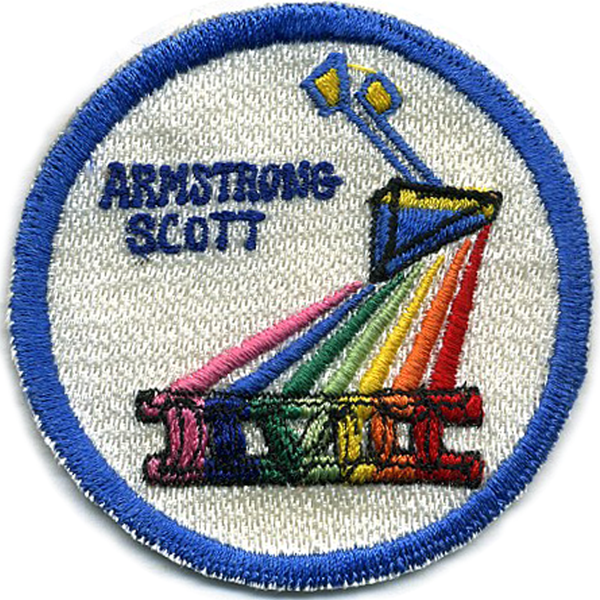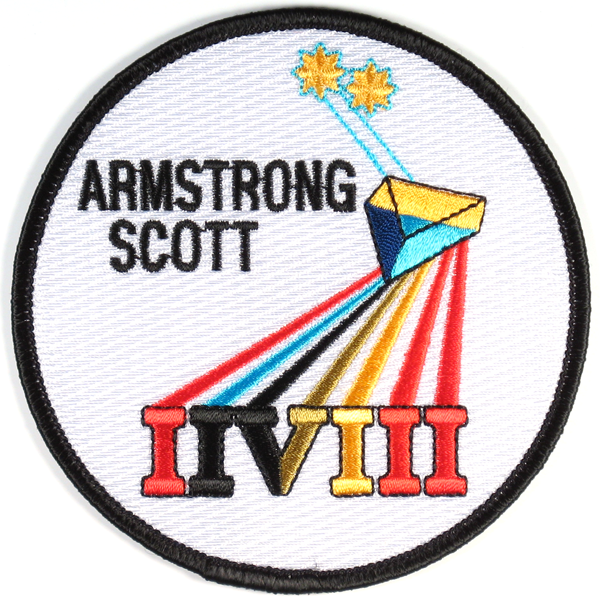

Neil Armstrong
David Scott
crew

The light from the twin stars Castor and Pollux is split into a spectrum of colors by a prism, indicating the whole range — or spectrum — of project Gemini objectives were covered by this flight. The spectrum projects to the zodiacal symbol for the constellation Gemini, and the Roman numeral “VIII” denoting the mission number. In this way, the patch reads “Gemini 8”, but with just the right number of characters to easily divide the primary colors of the spectrum. The patch was worn on the right breast.
Both the artwork and the crew-worn patch shows that the vertical lines of the zodiacal symbol for Gemini bow inward toward each other, distinguishing it from a Roman numeral “II”.
A striking feature of this patch is that the design on the patch neither conforms to nor acknowledges its enclosing circle in any way. It’s as if the design was arrived at without any concern for a dominant shape, and was then just plopped into a circle because that was the most common shape for a patch. The white background further emphasizes the disconnect. The Gemini 6 patch had set a precedent for using a polygonal patch shape, and a slight re-arrangement of the interior might have fit nicely into an octagon.

[ge08-em5]
This image was provided to me by McDonnell artist Anthony
Tharenos. It is odd that it was in his collection, mostly because
I don’t believe McDonnell was involved in its creation. This is a
pretty poor replica — the stars are the crew names being
particularly lame.

[ge08-em4]
A pretty dreadful replica by Randy Hunt. The border is black instead of light blue;
the interior of the prism has three colors instead of
two; the stars are too big; the Roman numerals are rendered separately,
with not connecting serifs; and the colors bear no relation to a spectrum.
This patch is a full 4″ in size.
101mm dia


NASA photo KSC-66C-1845
The Gemini 8 crew at the Cape,
and a detail from that photo showing Scott’s patch..